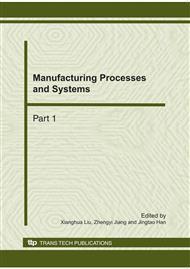p.728
p.732
p.736
p.740
p.744
p.749
p.753
p.758
p.763
Numerical Study of Shaped Charge Jet Formation and Penetration into Multi-Layer with Different Liner Material
Abstract:
This paper investigates the penetration performance of shaped charge against multi-layer target. A titanium alloy liner of shaped charge is proposed in order to obtain large perforated hole. Jet formation and penetrating into multi-layer target was calculated by hydro code AUTODYN. For different liner material include titanium alloy, mild steel and Cu, the explosion energy conversion, jet tip velocity and jet length, also the penetration performance are studied. It is found that the kinetic energy of jet is larger and the shape of jet is podgier when the liner material is titanium alloy, the perforated hole diameter on multi-layer improved 20% compare with the mild steel and Cu liner, the numerical simulation is good agreement to experimental results.
Info:
Periodical:
Pages:
744-748
Citation:
Online since:
October 2010
Authors:
Keywords:
Price:
Сopyright:
© 2011 Trans Tech Publications Ltd. All Rights Reserved
Share:
Citation:


